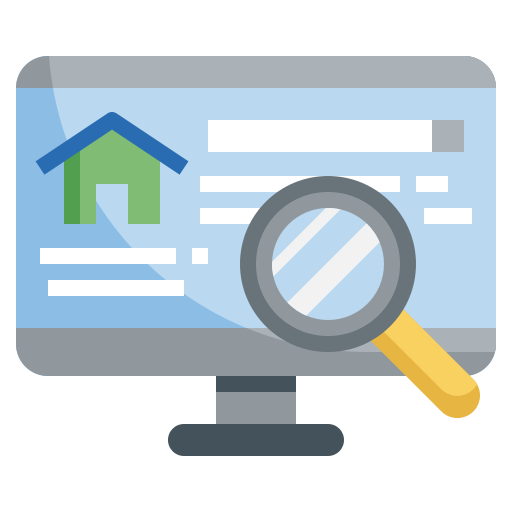Last Updated: January 2024

Starting a property management company requires strategic planning, covering aspects like market research, business licensing, and portfolio development. A robust operational structure, cutting-edge technology, and stable of reliable vendor relationships, can significantly enhance efficiency and competitiveness. Aspiring entrepreneurs in this field should also focus on fostering excellent tenant relations and keeping abreast of local real estate regulations to ensure long-term success
10 Steps to Starting a Property Management Company
Starting a property management company requires following a series of steps to follow. Below we take a look at the 10 key steps to starting a property management company:
1. Understanding the Basics of Property Management
This first step is very important for anyone venturing into this business. It involves gaining knowledge about the fundamentals, including the roles and responsibilities of a property manager. These may encompass tasks like collecting rent, coordinating repairs, managing tenant relationships, and understanding the local and federal laws related to rental properties. A firm grasp of these basics sets the groundwork for effectively managing properties and meeting the expectations of property owners and tenants.
2. Business Planning and Legal Considerations
When running a property management business, there will inevitably be lawsuits, threats, and difficult situations. Being proactive about business planning and legal considerations refers to the foundational groundwork for starting your property management company. It involves creating a comprehensive business plan that outlines your business objectives, target market, competitive analysis, financial projections, and a marketing strategy. On the legal front, you need to understand the requirements for business licensing and registration, zoning laws, and regulations pertaining to property management in your region. Also, it’s crucial to know the local, state, and federal laws regarding landlord-tenant relationships to ensure you operate within legal boundaries.
3. Building Your Operations: Property Acquisition and Management Tools
Before you get your first client, you will need to have a plan and tools to effectively manage their property. This is the practical step of setting up your business and starting operations. This involves methods and strategies for acquiring and onboarding properties to manage, be it through networking, partnerships with real estate agents, or direct outreach to property owners. Onboarding entails introduction plans, onboarding templates and SOP (Standard Operating Procedures). Additionally, it also includes understanding and implementing the right property management tools and software solutions, which can aid in streamlining various tasks like tenant screening, rent collection, maintenance requests, and financial reporting. These tools can significantly increase your efficiency and ability to manage multiple properties effectively.
4. Marketing, Client Acquisition, and Growth Strategies
This step is about designing and implementing effective strategies to attract clients and grow your property management business. This entails creating a strong brand identity, utilizing digital marketing channels like websites, social media, and online ads, and traditional marketing techniques such as networking and referrals. It’s also about forging strong relationships with property owners and real estate agents, offering competitive pricing and service models, and using client testimonials to establish credibility. Over time, these strategies will help increase your client base, and subsequently, your business’s growth and revenue.
5. Staffing and Team Structure
A property management company requires a team. Staffing and team structure involves determining the human resources needed to effectively manage your property management company. This includes defining clear roles and responsibilities for tasks such as tenant screening, property inspections, maintenance coordination, financial management, and client relations. Staffing decisions should be influenced by the size of your portfolio, the complexity of your operations, and your financial resources. As the company grows, so too will the team, necessitating regular reassessment of team structure to ensure optimal operation and customer service.
6. Financial Management and Accounting for Property Management
A property management company usually collects rent on behalf of the property owner. Setting up proper property financial management and accounting processes ensures the company can successfully manage the financial transactions and accounting needs of client properties. This includes collecting rents, tracking expenses, managing budgets for property maintenance, preparing financial reports, and ensuring all activities comply with relevant financial regulations and property laws. These tasks require careful record-keeping and often the use of specialized property management accounting software. Ensuring strong financial management not only keeps the business running smoothly but also provides transparency and trust to property owners and tenants alike.
7. Technological Tools and Software for Property Management
There are many new digital tools and softwares for property management companies to help streamline and automate various aspects of property management. This can include property management software for handling daily operations, tenant applications, rent collections, property maintenance requests, financial reporting, and more. Additionally, some tools can assist with market research, property listings, and virtual property tours. Understanding and effectively using these technologies can significantly improve the efficiency of a property management company and enhance the experience for both landlords and tenants.
8. Risk Management and Dealing with Common Challenges
When dealing with many tenants, issues are bound to arise. Have a clear understanding of the potential pitfalls and hazards in property management, and establish procedures to mitigate these risks. This may include handling delinquent payments, dealing with property damage, managing disputes with tenants, or addressing unexpected vacancies. Additionally, understanding the regulatory landscape and ensuring compliance with housing laws and regulations is paramount to avoiding legal issues. Being prepared for these challenges can help ensure the stability and longevity of your property management business.
9. Customer Service and Tenant Relations
Property management companies are customer service businesses at the end of the day. Be sure to prioritize cultivating positive relationships with both tenants and property owners. This not only can bring in more business, but also demonstrates a company’s commitment to ensuring a property is smoothly operating. This involves prompt and professional responses to maintenance requests, clear and open communication channels, and understanding tenants’ rights and expectations. Ensuring tenant satisfaction can lead to longer tenancies, fewer vacancies, and a positive reputation for your company. A focus on customer service also increases client retention, as property owners value managers who can provide a hassle-free rental experience.
10. Continued Learning and Industry Trends
Once a property management company is up and running, the job is not over. The industry is always changing and staying abreast of changes and advancements in the industry gives your team the competitive advantage to better service existing clients and draw in new ones. This includes following new legislation or regulations affecting landlords and tenants, tracking economic trends impacting the real estate market, and keeping up with emerging technology in property management software and tools. Continuing to consume rental real estate education, attending industry events, and participating in professional associations can all contribute to this ongoing growth. An awareness of the evolving landscape helps to ensure your business adapts effectively and maintains a competitive edge.
Tools For Property Management Companies
Leveraging the right tools is paramount for property management companies to ensure delivering clients efficiency, accuracy, and exceptional service. When starting out, new property management companies should start with just the basic tools required to operate, and slowly invest in growing their set of property management tools as their business grows.
Attracting and Keeping Property Management Clients
Attracting and retaining clients is the backbone of a successful property management company. In a competitive industry, understanding how to draw in new business and maintain long-term relationships with clients can be the determining factors in your company’s growth and longevity. These strategies not only bolster your client base but also enhance your reputation in the market.
Ways to Attract Clients
- Networking: Forge strong relationships with local real estate agents, brokers, and attend real estate investment groups or association meetings. These professionals often come across investors looking for reputable property management services.
- Digital Presence: Ensure you have an SEO-optimized, user-friendly website and engage potential clients on social media platforms. Share valuable content, testimonials, and property success stories to showcase your expertise.
- Educational Workshops: Host workshops or webinars about property investment, management tips, or local real estate trends. This not only positions you as an industry expert but also helps you engage directly with potential clients.
Ways to Keep Clients
- Transparent Communication: Regularly update property owners about their property status, any issues, or improvements. Use clear reports, regular meetings, or digital real estate investor tools to ensure open and transparent communication.
- Continued Value Addition: Offer clients access to advanced property management software, provide periodic market analysis, or give insights into property enhancement opportunities to maximize their returns.
- Prompt and Efficient Service: Address concerns, maintenance requests, or emergencies promptly. The quicker and more efficiently you handle issues, the more trust you build with your clients, ensuring long-term relationships.
The #1 Rental Property Newsletter
Once a month, we send out an exclusive Rental Property Market Update with top stories, current mortgage rates, building products, and more. No spam and unsubscribe anytime.


Starting a Property Management Company FAQ
How Much Initial Investment is Needed to Start a Property Management Company?
Start-up costs can vary based on location, scale, and business model. Common initial expenses include licensing fees, office space rental (if not operating from home), software, marketing materials, and initial staffing. It’s essential to draft a detailed business plan to outline potential costs and financial projections.
How Can I Differentiate my Property Management Company From Competitors in the Market?
Differentiation can be achieved by offering unique services, leveraging advanced property management technologies, prioritizing customer service, providing additional value through market insights, or specializing in niche markets, like luxury properties or vacation rentals. Building a strong brand reputation through quality service, transparent communication, and community engagement can also set your company apart.
Which States Require a Broker License for Property Management Company?
In the United States, several states require property managers to have a real estate broker’s license or a specific property management license to operate legally. The requirements can vary widely and might change over time. The following states require a broker’s license for property management activities:
- Alaska
- Arkansas
- Colorado
- Georgia
- Idaho
- Illinois
- Iowa
- Kansas
- Kentucky
- Maine
- Maryland
- Missouri
- Montana
- Nebraska
- Nevada
- New Mexico
- North Carolina
- North Dakota
- Oklahoma
- Oregon
- South Carolina
- South Dakota
- Tennessee
- Texas
- Utah
- Vermont
- Virginia
- Washington
- Wyoming
*Some states might allow property management activities under a salesperson license, provided that person works under a broker, or have specific licenses separate from the broker’s license. Check specific licensing regulations with your state’s real estate commission or similar regulatory body. Be sure to consult with legal counsel or the appropriate state agency to ensure you have the latest and most accurate information.
About the Author


Ryan Nelson
I’m an investor, real estate developer, and property manager with hands-on experience in all types of real estate from single family homes up to hundreds of thousands of square feet of commercial real estate. RentalRealEstate is my mission to create the ultimate real estate investor platform for expert resources, reviews and tools. Learn more about my story.
















